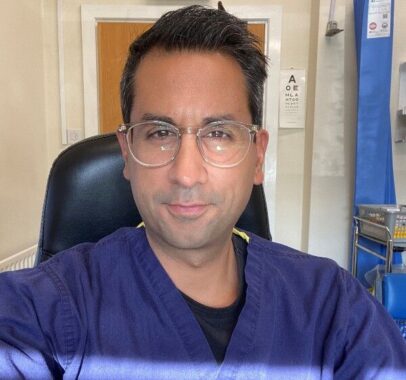The plan to remove red tape preventing SAS doctors from entering primary care would lead to further division in the workforce, says Dr Carter Singh
I am not a Luddite, nor do I wish to tamper with progress and a much-needed expansion of the GP workforce. But it would be naïve of me to see the GMC’s plan to enable SAS doctors to enter general practice as an altruistic move that will help a profession on its knees.
Disguised under the veil of inclusivity, the proposal – announced on Tuesday – is nothing but political posturing for the sake of winning votes and meeting targets. And as politicians and regulators search for a win-win outcome, they may well lead us to a lose-lose situation.
It’s hardly a coincidence that the proposal is released now as we get closer to the Government’s delusional deadline to expand the GP workforce by 6,000.
But ultimately, the idea of using a subset of doctors – who largely belong to ethnic minority and traditionally marginalised groups – as rota-fodders and gap-fillers will hardly do anything for their self-esteem, confidence and credibility, or those of general practice.
So, at this stage, I have more questions than answers:
- Is it a strategic step to reduce GP income and value?
- What would SAS doctors add in addition to experienced advanced nurse practitioners?
- Given the choice, would patients choose to see a GP or a non-GP grade?
- Would it expose our profession to further denigration by patients and the media?
- Would it create a two-tiered system that may stigmatise and undermine non-GP grades?
- Would it take away fully qualified GPs to supervise these colleagues?
- What are the legal ramifications in negligence cases for this grade of doctors and their supervisors? Regulatory fitness to practice tribunals are already awash with doctors from ethnic minority and traditionally marginalised groups.
- Would the role attract a certain type of doctor who belongs to a subset of vulnerable doctors who may be discriminated against and targeted by regulators?
Furthering the divide
Reviewing those who don’t attain the CCT, it seems they all too often belong to ethnic minorities, which highlights the problem of differential attainment. I therefore worry that the SAS role in primary care would mainly comprise doctors from ethnic minority and traditionally marginalised groups (as is the case in hospitals) and increase pre-existing stigmatisation and discrimination.
When I was a junior doctor, I probably gained more meaningful experience from my SAS colleagues than I did from my consultants. Our hospital SAS colleagues are highly skilled but often under-valued and discriminated against. And sadly, very few of them are doing the role out of choice but rather as the result of institutional racism, lack of training and support/mentoring.
They say the devil is in the details, but it seems to me that the whole idea and sentiment underlying the proposal is hardly angelic. It is further segregation and division of an already exploited workforce masquerading as inclusion and inclusivity.
To oppose this proposed workforce expansion would not be synonymous with rejecting the wider MDT working, nor would it be discriminatory. The straplines may fool the lay public who have little understanding of the unintended consequences of knee-jerk changes to the complex health system architecture, but it doesn’t fool the average GP who can see this for exactly what it is.
Unfortunately, it will be overstretched frontline GPs who will have to pick up the pieces when this caper fails and the current cabinet is replaced in a few months’ time.
Dr Carter Singh is a GP partner and chair of Nottinghamshire LMC

















Really great article Carter! You’ve made some excellent points